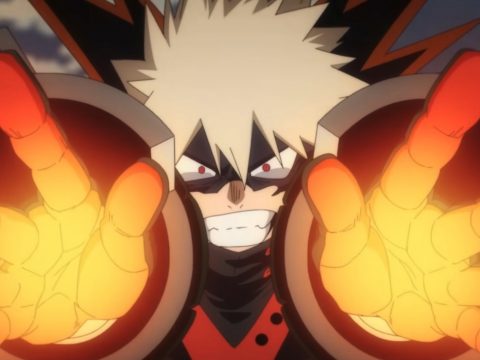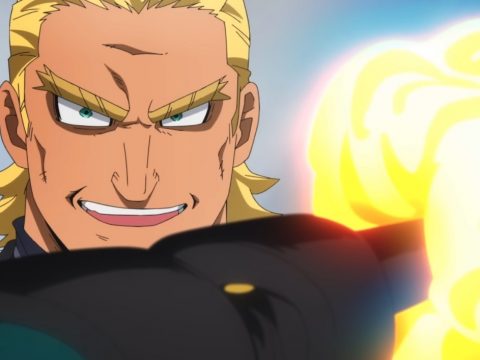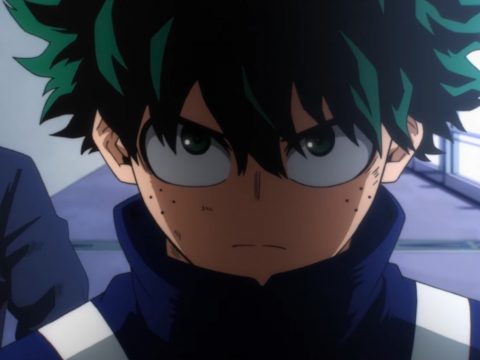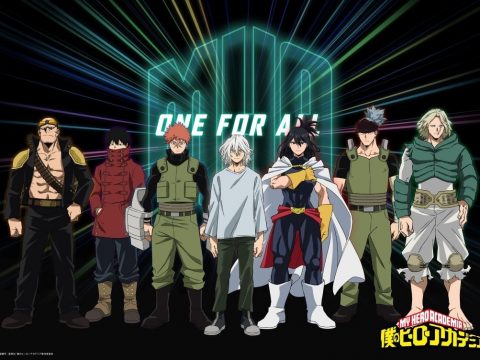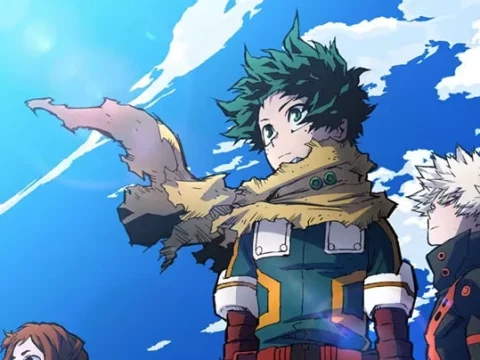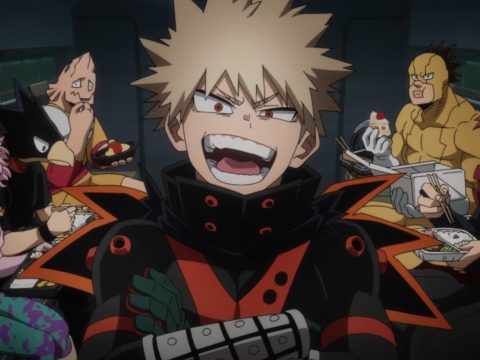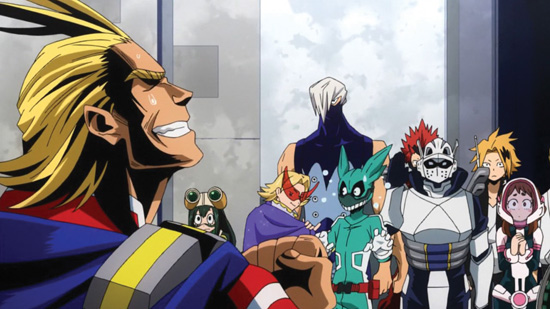
Izuku Midoriya might be the most relatable shonen hero out there. After all, as much as we love characters like Luffy and Naruto, not many of us can relate to the desire to be the king of the pirates or the endless, fiery ambition to become the next Hokage. So what makes Izuku so special? It’s not like we can just leap out of our windows at any moment and become bonafide superheroes. The catch with Izuku—the quality that really puts him on our level—is the fact that he’s just a straight-up, hardcore fan.
That’s right, the star of My Hero Academia is a bonafide otaku, but not the type we normally see depicted in anime and manga. There are countless series, particularly in the realm of light novel adaptations, that feature a NEET, or hikikomori, protagonist. Izuku, on the other hand, is a fan of heroes in the same way a wrestling fan might have that one spandex-clad suplexer they obsess over day and night. He longs to be as strong and selfless as the number one hero, All Might, but there’s one major roadblock standing between Izuku and his dreams: He has no powers.
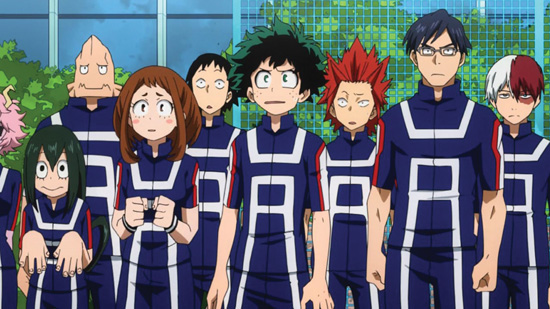
In the world of My Hero Academia, more people are born with powers, known as Quirks, than without. That makes Izuku the exception to the rule, and it’s what keeps him watching the same old YouTube videos of heroic acts rather than committing them himself. Despite that major handicap, though, Izuku remains as determined as ever to make it as a hero, and that’s why manga author Kohei Horikoshi’s series is currently near the top of the shonen heap. It’s as far from wish fulfillment as you can get. Izuku has to scrape and scrap for every inch of purchase in the world of superheroics, and even the assistance he gets along the way brings with it its own body-crushing caveats.
The assistance in question comes from none other than the aforementioned hero among heroes, All Might. He’s one of many colorful characters introduced in the first season of My Hero Academia, which features more unique heroes per episode than most comics churn out in an entire run. We covered some of these—from the frog-like Tsuyu Asui to the literally-bird-headed Fumikage Tokoyami—in our previous feature on the series (see our February 2017 issue for the cover story). The bottom line is that Horikoshi’s fantastic original character designs are even more impressive in animated form, thanks to both anime character designer Yoshihiko Umakoshi (Berserk, Air Master) and the seriously amazing work of production studio BONES.
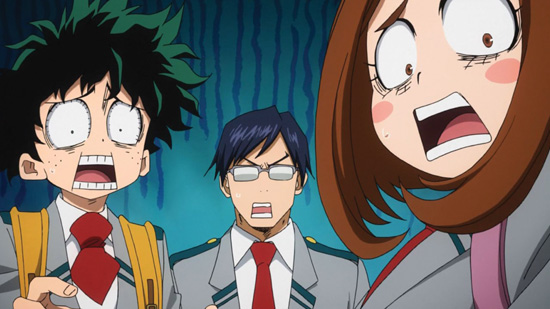
BONES has quickly become one of my favorite anime studios, especially in the last few years. My Hero Academia is among its strongest works, thanks in no small part to the efforts of director Kenji Nagasaki (No. 6, Gundam Build Fighters) and series composition writer Yousuke Kuroda (Trigun, Jormungand). It’s clear the staff really gets what makes My Hero Academia special, and they don’t mess with a good thing too much outside of delivering one of the best looking animated series of 2016. The full 13-episode run is fluid and exciting, proving that the world of My Hero Academia was really meant for full-color action.
Despite the fact that it’s a continuing series, My Hero Academia makes for a great single-season watch, and it’s absolutely worth owning. By the time you read this, the wait for Season 2 will nearly be over, but you’ll still have plenty of time to get in a few marathons of this excellent first outing in the meantime. Recommended.
studio/company: FUNimation
available: Now
rating: TV-14


